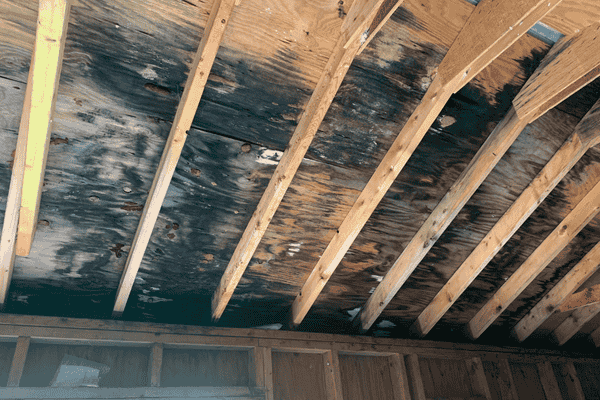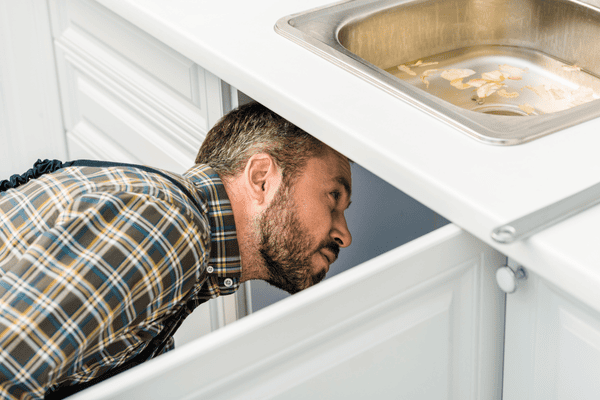You keep your home clean, tidy, and well-maintained—so why does it still smell musty? Why are your allergies acting up when you’re indoors? The culprit might be mold hiding in plain sight, thriving in unseen nooks and crannies.
Hidden mold can wreak havoc on your health and your home. The worst part? It often lurks in places you wouldn’t expect, growing undetected for months or even years. By the time you see or smell it, the damage may already be extensive.
The good news? By knowing where mold hides and how to detect it early, you can prevent expensive repairs and safeguard your indoor air quality. In this guide, we’ll cover:
- The conditions that allow mold to grow
- The most common places mold hides in homes
- How to spot the signs of hidden mold
- Non-invasive methods to check for mold
- Steps to take if you find mold
- Long-term prevention tips to keep mold from returning
Let’s dive in!
Why Mold Thrives in Hidden Areas
To effectively look for hidden mold, it helps to understand why it grows unnoticed. Mold spores are present naturally in the air, but they require the right conditions to thrive. These conditions include:
- Moisture: Leaks, high humidity, and condensation provide the dampness mold needs.
- Darkness: Unlike plants, mold doesn’t need sunlight, thriving in hidden spaces.
- Organic Materials: Mold feeds on wood, drywall, carpet, and other materials.
- Stagnant Air: Poor ventilation allows moisture and spores to settle.
These factors make certain locations in your home especially susceptible to mold growth. Even if you can’t see it immediately, the problem could be lurking beneath surfaces or behind structural elements.
Common Places Mold Hides in Your Home
While visible mold growth is alarming, it’s often just the tip of the iceberg. Mold frequently grows behind the scenes, sometimes for months or years before being discovered. Below are the top areas to check for hidden mold in your home.
1. Behind Walls and Under Flooring
Mold behind walls is one of the most insidious infestations because you won’t see it until it spreads outward. If there’s been previous water damage—especially from leaks or flooding—mold could be growing beneath paint, wallpaper, or drywall. Warped walls, peeling paint, or a musty odor could signal hidden mold.

2. Inside HVAC Systems and Air Ducts
Mold in air ducts and HVAC systems is particularly concerning because it distributes airborne spores throughout your home. HVAC components, such as cooling coils, drip pans, and ductwork, provide the moisture mold needs to thrive. A musty smell when the AC or heater runs is often a sign of mold contamination.
3. Beneath Sinks and Behind Kitchen Appliances
Leaks from pipes under the sink, dishwasher, refrigerator, or washing machine can go unnoticed for long periods. Even small drips can seep into cabinets and drywall, creating an ideal environment for mold. Regularly check for moisture, discoloration, and warped materials in these areas.
4. In Attics and Basements

Attics and basements tend to have high humidity, poor ventilation, and hidden leaks. In attics, roof leaks can lead to hidden mold growth in insulation. In basements, foundation cracks and condensation buildup provide prime conditions for mold colonies.
5. Around Windows, Doors, and Ceiling Corners
Condensation near windows, doors, and ceilings creates an unnoticed breeding ground for mold. Signs of mold include black spots, peeling paint, or a damp odor. Regularly inspect these areas, especially after heavy rainfall or high humidity.
6. Inside Carpets, Mattresses, and Upholstery
Fabric and padding absorb moisture easily. If rugs, couches, or mattresses feel damp for prolonged periods, mold could be growing underneath. Residual moisture from spills, leaks, or improper cleaning can trigger mold growth.
How to Find Hidden Mold Without Tearing Apart Your Home
You don’t need to demolish walls to detect mold. Here are some non-invasive methods to check for mold before taking further action:
- Trust Your Nose: A persistent musty smell is a strong indicator of mold, especially in poorly ventilated areas.
- Look for Visible Damage: Peeling paint, warped walls, discolored wallpaper, or black spots could signal mold.
- Monitor Allergy Symptoms: Unexplained headaches, congestion, sneezing, or skin irritation that worsens indoors may indicate a mold issue.
- Use a Moisture Meter: This device detects trapped moisture inside walls, helping locate potential mold problems.
- Try an At-Home Mold Test: Professional-grade mold test kits can identify airborne spores in suspicious areas.
What to Do If You Find Mold
If you confirm mold growth, taking immediate action is critical. Here’s what to do next:
Small, Manageable Mold Problems
If the mold covers an area smaller than 10 square feet, DIY remediation may be safe:
- Wear protective gloves, a mask, and goggles to avoid exposure.
- Scrub moldy surfaces with a solution of white vinegar, hydrogen peroxide, or a mold-killing cleaner.
- Dry the area thoroughly to prevent recurrence.
- Mold Cleanup in Your Home | US EPA
When to Call a Professional
If you encounter any of the following situations, seek professional mold remediation:
- Hidden black mold is suspected (toxic and difficult to remove).
- The mold infestation is widespread or inside walls.
- You have underlying health conditions that mold exposure could worsen.
Professional inspections from experts like Howard Environmental ensure accurate mold detection and unbiased assessments, helping you determine the safest and most effective removal strategy.
How to Prevent Mold Growth Long-Term
Preventing mold is easier than dealing with an infestation. Take these proactive steps to keep your home mold-free:
- Fix plumbing and roof leaks immediately.
- Use dehumidifiers to maintain humidity levels below 50%.
- Ventilate bathrooms and kitchens properly to prevent moisture buildup.
- Regularly inspect areas prone to mold growth.
- Clean and replace air filters frequently to reduce airborne spores.
- Use mold-resistant paint and materials in high-humidity areas.
Conclusion: Stay One Step Ahead of Mold
By knowing where to look for hidden mold and taking timely action, you can protect both your health and your home. Regular inspections and preventative measures will help keep mold from becoming a costly problem.
If you suspect mold, don’t wait until it’s too late.
Contact Howard Environmental today for a professional mold inspection and testing and ensure your home stays mold-free.

